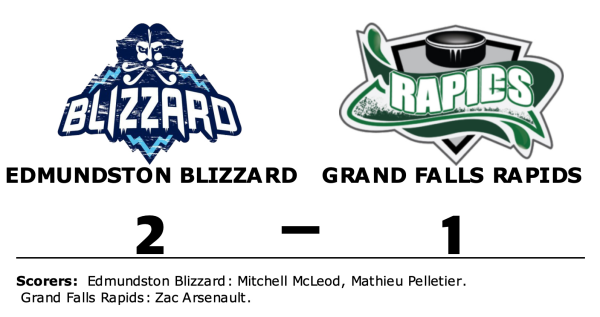
In the latest of a series of Partner Content* articles – United Robots explains how to go about integrating editorial robots into a newsroom for the first time.
Already used across virtually all local news groups in Sweden and Norway, and increasingly gathering momentum across Europe, North and Latin America, the conversation around automated journalism is changing. For many the question is no longer whether automation has value, but where and how it can make the biggest difference.
“We stopped calling projects with new publishers ‘proofs of concept’ because the expression is obsolete,” says Cecilia Campbell, chief marketing officer for United Robots. “We’ve proved our concept.”
But for publishers looking to integrate content automation for the first time, such a commitment can feel like a big step. Having decided how robot journalism fits into their wider strategy, they must still navigate the practicalities of introducing an entirely new technology into their newsroom.
“For a lot of our clients this is the first time they do this – it can feel daunting,” Campbell acknowledges. “But we’ve done it for some hundred news sites to date, so for us it’s an everyday thing, and we’re there to support the publisher.”
Unlike most other providers in this field, United Robots offers “content as a service”. The company manages the data sets and builds the robots, which send automatically-generated content straight to the publishing partner’s CMS. The robots employ a combination of AI, to spot the angle from the data, and natural language generation, to generate the copy.
But it’s not all about the tech. The human talent sitting behind the automation process boasts extensive editorial experience, with United Robots’ leadership having previously worked in a variety of senior publishing roles. This makes a significant difference to how they view best practice when it comes to implementation.

Brunswick News in northeast Canada publish robot written reports from junior ice hockey leagues, complete with automatically generated graphics with team logos and match result
“We’re one of the few who really understand the needs of a newsroom and have built our service around that,” Campbell explains. United Robots has generated more than four million articles for its publisher partners since its inception in 2015.
An automation project led by editorial
Setting up content automation at a publisher takes as little as one to two months. Editorial staff provide the United Robots delivery team with feedback on the automated texts against the newsroom style guide, and their involvement and buy-in is a central component of making the automation process work.
In fact, even if one is working with automation for the first time, editorial should be sat squarely in the driving seat. According to Gunnar Sodergren, head of delivery at United Robots, there is no need for extensive tech or IT involvement on the publisher’s side. The main technical demand on the publisher is ensuring its CMS can receive the content generated by the robots (much like a wire service).
Sodergren recommends identifying an individual such as the news editor to take the lead on the project and champion it in-house. “Buy-in from management and across the newsroom has proven to be key in all the successful implementations we’ve done.”
 Promoted white paper: How newsrooms can leverage automation
Promoted white paper: How newsrooms can leverage automation
Read United Robots’ 12-page report on newsroom automation: It explains what it is and how it can make journalism better.
Once the on-boarding process is complete, the robots are up and running and will automatically generate clean and accurate copy from agreed datasets and publish it straight to web.
“It’s fully automated – you don’t really need to do anything,” says Sodergren. “Our end goal with everyone is that it should go straight to the reader, keeping the effort on the part of the newsroom as low as possible.”
Ongoing support
The content delivered through automation requires little editorial oversight and publishers remain supported throughout by a United Robots customer success manager. “It needs looking after and tweaking, but that’s the strategy part of it, not the technical side,” says Campbell. “The latter should not be a headache if you work with us.”

US local media group McClatchy have deployed automated real estate content at two of its sites, Sacramento Bee and Miami Herald, with the goal of adding value to its local journalism offer
United Robots has so far provided most coverage around sports reporting and real estate, with weather, traffic and business reporting also growing in scale. One “sports bot” is generating 60,000 football match reports for a single Dutch publishing partner this season.
Another publisher client has started doing push notifications about traffic updates, but only for paying subscribers, while another sells premium targeted advertising against automated content which it uses to populate its homes and living verticals.
A Norwegian publisher reports that 5% of all subscription conversions from articles come from robot written articles, which it works to ensure are relevant to readers.
United Robots has struck up publishing partnerships as far afield as Canada, Colombia, the US and Belgium. The company’s first UK projects are expected soon.
Creating better journalism
Common concerns over automating news content are that it will replace human journalists, but Campbell says automation is an investment and gives the example of one Swedish publisher client who hired 20 journalists in parallel with signing up to United Robots.

Gunnar Sodergren, head of delivery at United Robots
“The discussion tends to focus this perceived ‘either-or’ scenario, but that’s not what we see,” she says. “This is a complement to journalism. Everywhere around the world newsrooms are really strapped for resources, so you don’t want to be using your journalists to do really basic, routine reporting.”
She says that automated content actually “supports the business” by adding value to it through expanding local coverage “in a way you couldn’t do with just reporters”.
And that working with a content-as-service provider such as United Robots “removes a lot of the risk” in leveraging a relatively new technology, especially as publishers are not committing huge resources to the task, unlike if they were trying to build something internally.
Campbell’s advice to publishers looking to make that start: “Don’t try to create a two-year plan and have everything lined up before you even dip your toe in. We recommend you start testing and iterating and figuring it out. This is actually quite a small step, you just need to take it. Automation is happening in every area of life. You don’t want to miss out.”
Read more: Newsroom automation strategies: Don’t start with the tech, start with the ‘why’
This article was paid for by Press Gazette commercial partner United Robots. To find out more about how to leverage newsroom automation, download their free in-depth guide for publishers.
Email pged@pressgazette.co.uk to point out mistakes, provide story tips or send in a letter for publication on our "Letters Page" blog
